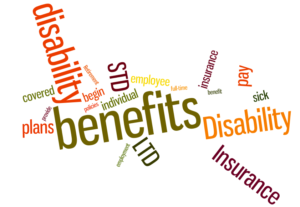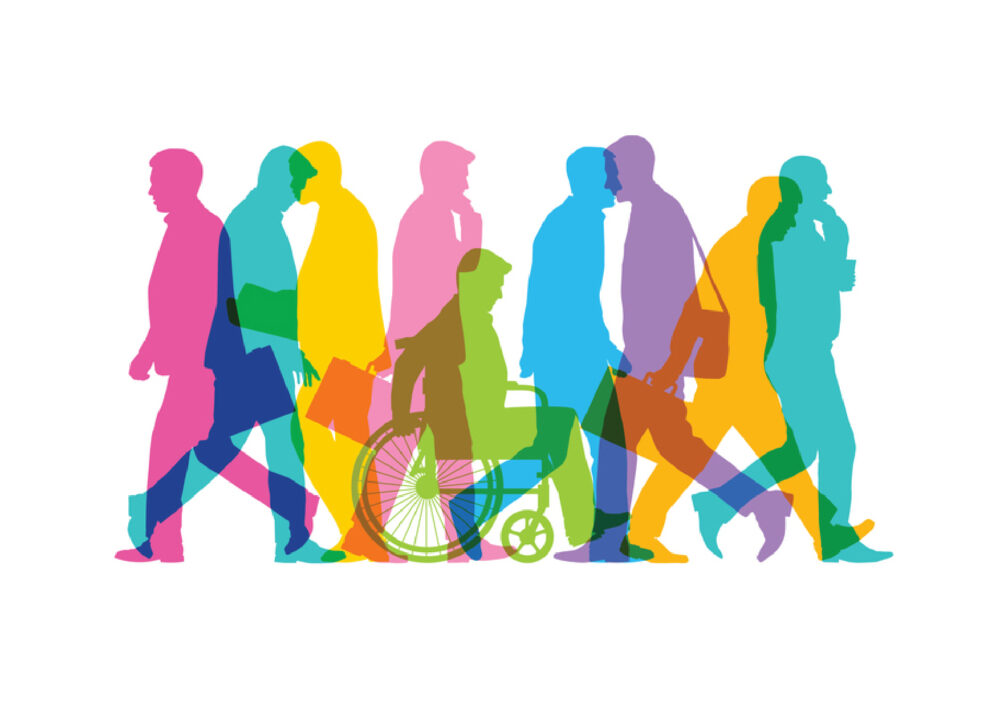Last Updated on March 11, 2025
Diabetes is one of the most common health conditions in the U.S. and the number of people who have diabetes is increasing every year. Currently experts estimate that more than 10% of the adult population has diabetes and that figure could be even higher. Diabetes can cause a range of health problems that make it impossible to work. If you have been diagnosed with diabetes and can’t work because of it and you expect that you won’t be able to work for at least a year because of your diabetes you can file a claim for Social Security disability benefits.
Disability benefits can provide the money that you need to pay for essentials like housing and food and also to pay for extra medical expenses that aren’t covered by your insurance. If you have worked and paid taxes at any point you can qualify for Social Security disability benefits.
Disability Benefits for People with Diabetes
 The symptoms of diabetes range in severity, and often taking steps to correct diabetes with diet, exercise, and insulin therapy can lessen the risk of serious symptoms. Some of the most common symptoms of diabetes include:
The symptoms of diabetes range in severity, and often taking steps to correct diabetes with diet, exercise, and insulin therapy can lessen the risk of serious symptoms. Some of the most common symptoms of diabetes include:
- nephropathy (kidney disease)
- neuropathy (nerve damage) in feet or hands that disrupts your ability to stand, walk, or use your hands
- retinopathy (eye and vision problems)
- cellulitis and other skin infections
- hypertension (high blood pressure)
- heart disease
- stroke
- gastroparesis (a type of nerve damage that interferes with digestion)
- peripheral arterial disease (reduced blood flow to your limbs), and
- depression
Medically Qualifying for Diabetes

All of the conditions that make someone eligible for Social Security disability benefits are listed in the Social Security Administration’s Blue Book. Every listing in the book has a set of very specific requirements that a person has to meet in order to be approved for benefits based on that condition. In just the last couple of years the SSA removed the listing for diabetes. However, people with diabetes can still qualify for benefits if they meet the detailed listing for one of the conditions that often appear concurrently with diabetes or that are caused by diabetes. Some of those conditions and their requirements include:
- Bacterial Infections/Skin That Won’t Heal (Listing 8.04). If you develop ulcerated skin lesions that last longer than three months despite treatment and they make it difficult for you to walk or use your hands, you can qualify for benefits under the listing for chronic skin infections.
- Diabetic Nephropathy(Listing 6.06). If the diabetes causes your kidneys to stop filtering properly and you require daily dialysis or if there is evidence of too much protein or creatine in your plasma, you may qualify for benefits until this listing.
- Diabetic Peripheral Neuropathies (Listing 11.14). It’s very common for people with diabetes to have some form of nerve damage in their hands, feet, arms, or legs. But in order to qualify for benefits under this Blue Book listing you have to show that your neuropathy causes a significant disruption of your ability to walk, stand, or use your hands in a skilled way.
- Diabetic Retinopathy (Listing 2.00). One of the most common side effects of diabetes is having vision problems. If you develop blurred vision or poor visual acuity (between 20/100 and 20/200 in your better eye), or poor peripheral vision from surgery to correct your central vision, you can qualify for disability benefits under this listing.
- Cardiovascular Problems -Diabetes can lead to coronary artery disease (listing 4.04), chronic heart failure (listing 4.02), peripheral vascular disease (listing 4.12), and an irregular heartbeat (listing 4.05). Any of these conditions can qualify someone to receive disability benefits.
- Amputation (Listing 1.05). If left untreated diabetes often leads to amputation of a foot or both feet. If you’ve had a foot amputated due to nerve damage and poor circulation caused by diabetes, you may be able to get benefits if you have other limitations as well.

Following a Doctor’s Orders
When you file a claim for disability benefits due to a condition caused by diabetes you will need to submit proof that you are following your doctor’s orders and following through on treatments to try and improve your health. Most often doctors will prescribe a certain diet and lifestyle changes like getting a certain amount of exercise regularly as well as insulin therapy and other treatments to improve your health. You need to prove to the SSA that you are doing everything possible to improve your condition by strictly following your doctor’s orders in order to be considered eligible for disability benefits.
Medical Vocational Allowance
 Often people who have diabetes fail to meet the very strict requirements set by the SSA in order to qualify for disability benefits due to diabetes. When this happens, there is still a way that you can be eligible for disability benefits. It’s called a Medical Vocational Allowance. In order to be qualified for disability benefits under this exception you will need to download a Residual Functional Capacity form from the SSA’s website and have your doctor fill it out.
Often people who have diabetes fail to meet the very strict requirements set by the SSA in order to qualify for disability benefits due to diabetes. When this happens, there is still a way that you can be eligible for disability benefits. It’s called a Medical Vocational Allowance. In order to be qualified for disability benefits under this exception you will need to download a Residual Functional Capacity form from the SSA’s website and have your doctor fill it out.
The Residual Functional Capacity evaluation is where your doctor can make a case for you to receive benefits. Your doctor will need to describe in great detail why your condition makes it impossible for you to work. The doctor will also need to describe the specific limitations related to your diabetes that make it impossible for you to do the kind of work that you had been doing.
After you get the RFC evaluation back from your doctor you can submit your claim, your medical documentation, and your evaluation to the SSA. The SSA will then examine your documentation and look at factors like your age, your work history, and your skill set. They will look to see if there is any kind of work at all that you can do. If they can’t find any type of work that you’re qualified to do with the limitations that you have then you will be eligible for SSA benefits.
Filing A Claim
The best way to file a claim is to make an appointment at your local SSA branch office. Bring all of your documentation and paperwork with you and someone at the SSA office will help you fill out the claim forms and submit your documentation. As you are probably aware, this process will take time. Please do not expect a decision overnight. Most likely there will be follow up phone calls and questions you’ll need to answer.
How to Appeal a Denial
It’s very common for people to have their claim for disability benefits denied on the first try. If you are denied you need to file an appeal immediately. Your appeal will be heard by an administrative law judge and you are allowed to have a lawyer. Having a lawyer that specializes in disability benefit claims can be a huge help in getting an approval because the lawyer can present a cogent fact-based case for why you should be approved based on the Social Security Administration’s listings and rules.
Resources:
Diabetes 365: https://www.diabetes365.org/
Diabetes and SSDI: https://www.disabilitybenefitscenter.org/social-security-disabling-conditions/diabetes
Blue Book Listing for Amputation: https://www.ssa.gov/disability/professionals/bluebook/1.00-Musculoskeletal-Adult.htm#1_05
Medical Vocational Allowance: https://www.disabilitybenefitscenter.org/glossary/medical-vocational-allowance
Local SSA Office: https://www.disabilitybenefitscenter.org/state-social-security-disability
